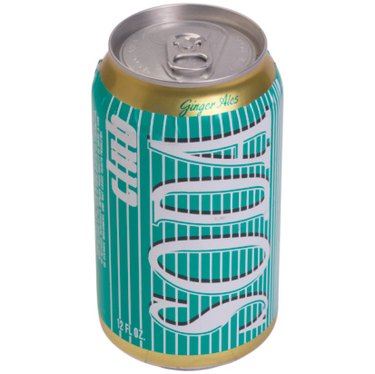Things You'll Need
One soda can
Pair of wire strippers
One 20-foot length of insulated wire
Two 12-foot lengths of insulated wire
Scissors
One iron bolt
Two 1.5-volt D batteries
Nail file
Electrical tape
Cork
Glue
Modeling clay
2 push pins
1 paper clip
1 large piece of cardboard
1 rubber band

Invented in the 1800s, buzzers use electromagnets to produce buzzing sounds which have been applied to everything from doorbells to security alarms. A simple, inexpensive buzzer may be constructed from everyday items like soda cans and push pins, producing sound much in the same way as a more expensive and intricate counterpart. Cost effective and easy to construct, these buzzers also provide a family-friendly activity that also teaches a lesson in electromagnetism.
Step 1
Strip ½ inch of the insulating plastic from both ends of the 20-foot length of wire using the wire strippers. Starting at the middle, wrap the wire around the iron bolt at least 200 times to form a coil around the bolt, leaving about two inches of wire free at both ends. Wrap the electrical tape around the coil to form an electromagnet.
Video of the Day
Step 2
Secure the nail file to the cork using the rubber band. The nail file should vibrate back and forth when moved.
Step 3
Wrap one end of the exposed electrical wire around one end of the nail file. Use the electrical tape to secure the wire to the nail file.
Step 4
Attach the cork and the electromagnet to the cardboard using the glue. The electromagnet should be in the middle of the board, with the cork positioned near the top right corner so that the free end of the nail file is just above one end of the iron bolt.
Step 5
Wrap the other end of the exposed wire around one of the push pins. Push the pin through the end of the paperclip and into the cardboard, securing the pin and paperclip to the cardboard base. Ensure that the exposed wire touches the paperclip.
Step 6
Strip ½ inch of insulating plastic from both ends of one of the 12-inch lengths of wire. Wrap one end of the exposed wire around the other push pin. Push the pin into the cardboard base about ½ inch from the other push pin so that they are side by side. Ensure that the paperclip from the first push pin can touch the second, forming a switch.
Step 7
Hold the two 1.5-volt batteries side by side, inverting one of the batteries so that each end has one positive and one negative end point. Tape the batteries together with electrical tape to form a battery pack for the buzzer.
Step 8
Connect the other exposed end of the 12-inch length of wire to one of the ends of the battery using the electrical tape. Attach the battery pack near the top left corner of the cardboard base using the modeling clay.
Step 9
Expose the aluminum of the can using the scissors to scrape the paint from the can. You only need to expose a small patch of aluminum, one patch on each side of the can, near the bottom of the can.
Step 10
Strip ½ inch of insulating plastic from both ends of the second 12-inch length of wire. Connect one of the exposed ends to one of the patches of aluminum, using the electrical tape. Tape the other end of exposed wire to the opposite end of the battery.
Step 11
Position the can slightly above the nail file so that the other exposed patch of aluminum rests just above the nail file. This places the end of the nail file between the can and the end of the bolt. Secure the can to the cardboard base using the modeling clay.
Step 12
Turn on the buzzer by completing the circuit made by the paperclip switch. This will turn on the electromagnet, which will cause the nail file to vibrate back and forth, hitting the can to produce the buzzer's sound.
Video of the Day